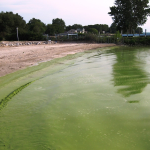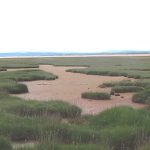What is it?
- Wetlands are defined as: “lands transitional between terrestrial and aquatic ecosystems where the water table is usually at or near the surface or the land is covered by shallow water”.
Types of Wetlands
- Marshes: Wetlands dominated by herbaceous plants such as grasses and sedges. They can be freshwater or saltwater and are often found in river floodplains, around lakes, and along coastlines.
- Swamps: Wetlands dominated by woody plants such as trees and shrubs. They can be freshwater or saltwater and are often found in low-lying areas prone to flooding.
- Bogs: Peat-forming wetlands that receive water primarily from precipitation. They are acidic and low in nutrients, supporting specific plant species like sphagnum moss.
- Fens: Peat-forming wetlands fed by groundwater, making them less acidic and more nutrient-rich than bogs. They support a diverse array of plant species.
Ecological Functions
- Habitat: Wetlands provide critical breeding, feeding, and resting grounds for many species.
- Water Filtration: Wetlands act as natural water filters, trapping sediments and pollutants, which improves water quality.
- Flood Control: Wetlands absorb excess rainwater and release it slowly, reducing the risk of floods.
- Carbon Storage: Wetlands store large amounts of carbon in their vegetation and soil, helping to mitigate climate change.
Threats
- Pollution: Runoff from agriculture, industrial discharges, and urban areas can introduce pollutants into wetlands.
- Drainage for Agriculture: Wetlands are often drained to convert land for agricultural use, leading to habitat loss.
- Urban Development: Expansion of urban areas can lead to the destruction or alteration of wetland areas.
- Climate Change: Rising temperatures and changing precipitation patterns can alter wetland ecosystems and their functions.


